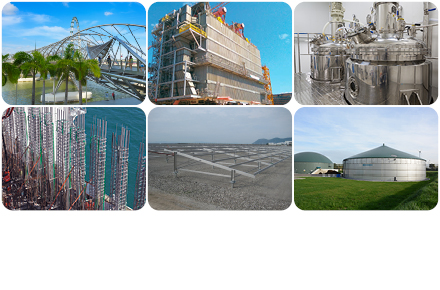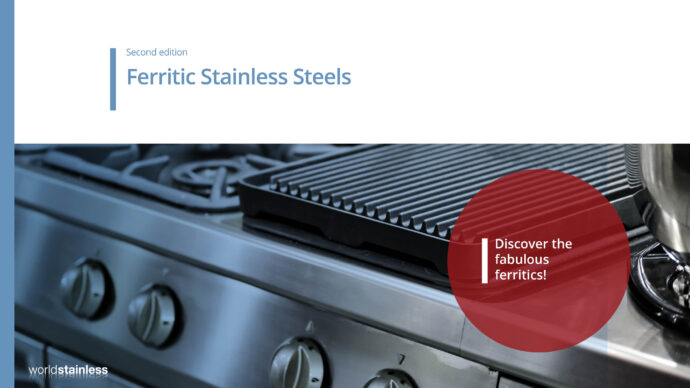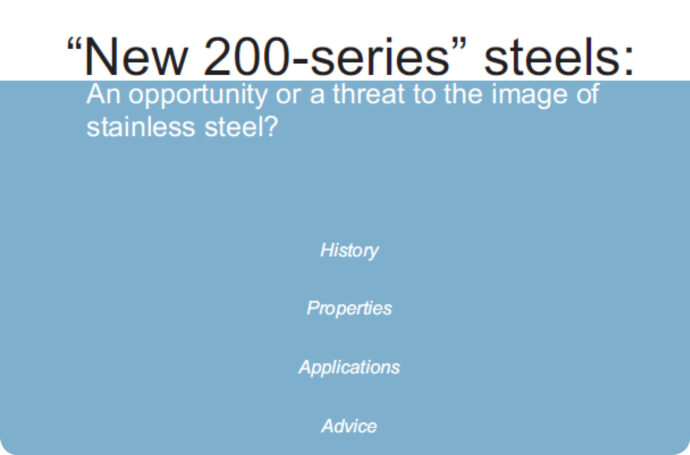Categories, grades and product forms
There are four main types of stainless steels:
Austenitic
Austenitic stainless steels contain a significant amount of chromium, and sufficient nickel or manganese to stabilise the austenite microstructure that gives these steels good formability and ductility (and makes them non-magnetic). A typical composition is 18 % chromium and 8 % nickel, as found in the popular AISI 304 grade. (AISI is an abbreviation of American Iron and Steel Institute and is commonly used as a grade designation.) Austenitic grades can be highly durable and corrosion resistant and have high ductility, low yield stress, relatively high tensile strength and good weldability. They have a very wide range of uses.
Ferritic
Ferritic stainless steels have properties similar to those of mild steel but show better corrosion resistance. Most common are 11 % and 16 % chromium containing grades – the former used mostly in vehicle exhaust systems and the latter mostly in cooking utensils, washing machines and Indoor architecture.
Austenitic-Ferritic (Duplex)
These stainless steels, which contain high chromium and some nickel, have a microstructure that is roughly 50 % ferritic and 50 % austenitic. They are mostly used in the process industry and in seawater applications.
Martensitic
Like ferritic grades, martensitic grades contain 12 to 16 % chromium. However, they have higher carbon content and are subjected to specific heat treatments during production, making them very hard and strong. They are used in applications such as turbine blades, cutlery and razor blades.
More details can be found in the publications below.



